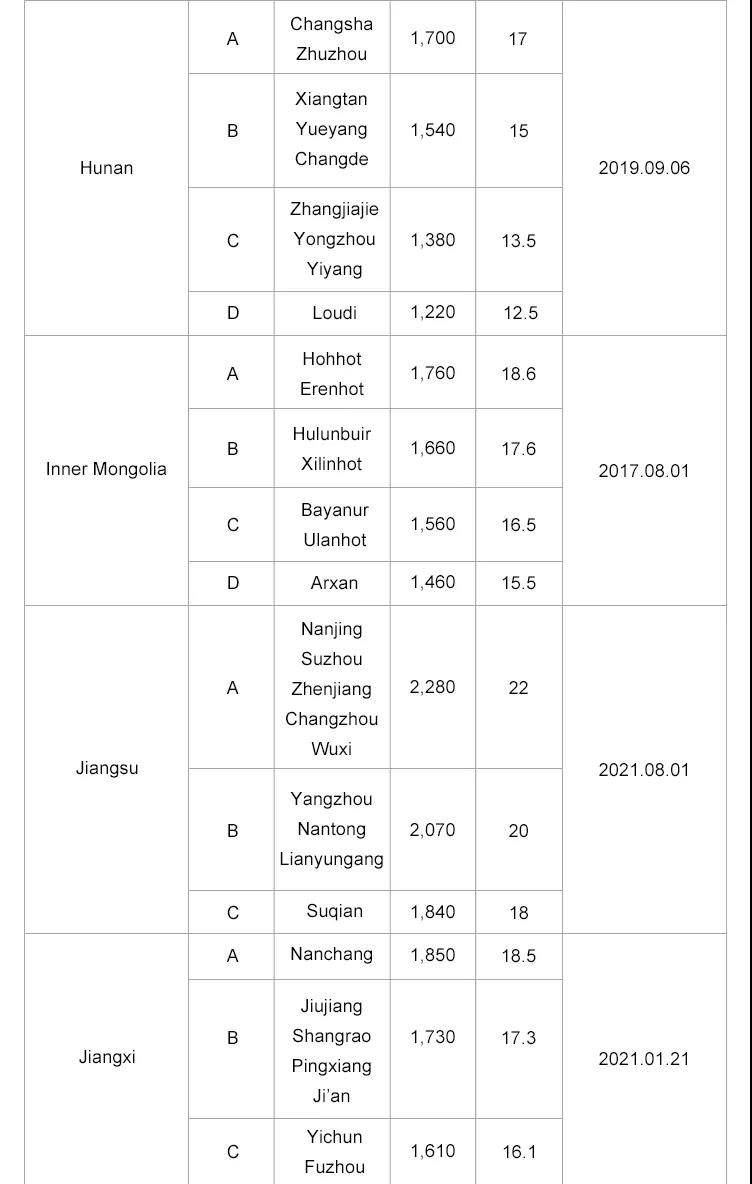A Guide to Minimum Wages in China in 2022
 CHINA
CHINA At the lower end of the wage spectrum, Hunan has the lowest monthly minimum wage level in China at RMB 1,220 and Yunnan‘s minimum wage level (RMB 1,350 per month) is slightly higher than that in Anhui (RMB 1,340 per month)

According to China’s Provisions on Minimum Wage, the legal minimum wage refers to the minimum labor remunerations that shall be paid by the employers to the employees under the precondition that the employee has provided normal labor within the promissory working hours or within the working hours that is prescribed in the labor contracts.








Note: Highlighted areas denote jurisdictions that updated their minimum wage in 2021. The monthly minimum wage is for full-time employment while the hourly minimum wage is for part-time employment.
**Hunan, Zhejiang provinces allow each city to decide which minimum wage level to apply. The cities given as examples are therefore subject to change.
For example, workers in Shanghai made an average of RMB 10,338 per month through 2020 – nearly four times the local minimum wage.
Moreover, employer social insurance and housing fund obligations add around an additional 37 percent to employers’ labor cost on top of the employees’ gross salary.

For foreign investors, rising wages are an unavoidable feature of doing business in China. Yet, when other factors like productivity, infrastructure, transportation costs, and access to a massive domestic market are considered – China may still emerge as the more cost-efficient option compared to countries with lower statutory labor costs.
When comparing locations for foreign investment into China, minimum wages are a helpful barometer to gauge labor costs across different regions.
From there, identifying industry-specific wage levels, availability of talent, and access to regional incentives offer a more nuanced view of ultimate labor costs within a given region.
